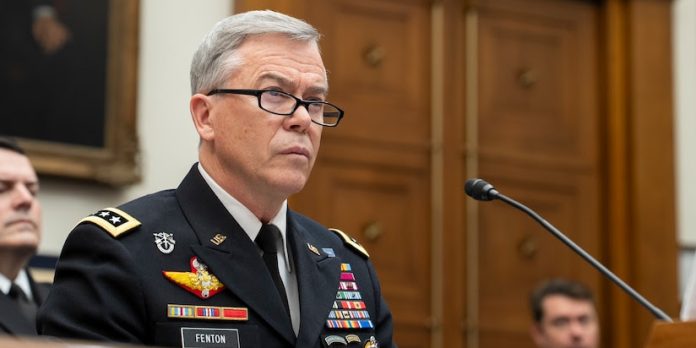WASHINGTON — Worldwide threats put the U.S. at risk and sometimes demand attention from U.S. Special Operations Command. To best meet those challenges, U.S. military acquisition needs to change, said Army Gen. Bryan P. Fenton, Socom commander.
“The character of war is changing faster than we’ve ever seen,” he said today before the House Armed Services Committee’s intelligence and special operations subcommittee.
“The innovation cycle now turns in days and weeks, not months and years. Our adversaries use $10,000 one-way drones that we shoot down with $2 million missiles — that cost-benefit curve is upside down,” he said.
Fenton noted that this is the most complex asymmetric and hybrid threat security environment he has seen during his 38 years of service. Contending with these challenges demands more from special operations forces.
“[It] requires tough choices, forcing trade-offs, as we strive to balance an increase in operations readiness and the need for modernization,” he said.
Fenton explained that over the past two years, for example, demand for Socom capabilities by combatant commands has increased by more than 35%, while at the same time, Socom has dealt with years of flat budgets.
To meet the demands of increased mission requirements and increasingly complex missions, he said Socom needs to improve its acquisition process.
“Our current acquisition procurement system … I would just offer, it’s outdated,” he said. “It’s glacial. I think it works in years and decades.”
He added that the lessons learned from the conflict in Ukraine made it clear how the U.S. military acquisition process can be changed for the better.
“What we’re seeing through the lens of Ukraine needs to be an acquisition … and procurement system that is hyper-speed, supersonic,” he said. “Because over there, we’re watching the changes in minutes, hours and days, and that is a very stark contrast” to what the U.S. does.
Fenton said changes to the requirements process, including simplifying it, as well as changes to authorities, could help Socom quickly get what it needs.
“If I could say it so bluntly, take more people out of that system, get less hands on the requirements process,” he told lawmakers. “Go from operator to commander and then acquisition.”
Fenton also suggested how changes in funding could benefit acquisition within Socom.
Funding for systems comes in the form of operations and maintenance funds; research, development, testing and engineering funds; and procurement funds. The Defense Department can’t easily move money between those budget lines, and that could be simplified, he said.
“I think there’s a way to take a lot of that off, compress the multiple lines to just a couple, and really modernize there,” Fenton said.
The general also asked for greater flexibility in how the department contracts new systems, particularly the option to increase the length of multiyear procurements.
“Give us an opportunity to think through multiyear processes,” he said. “Two years might seem multiyear, I think, to all of us. Multiyear probably needs to be five to 10 years so we can move at the speed and evolution of what we’re seeing out on the battlefield.”
Don’t miss out! Subscribe to our email newsletter to have all our smart stories delivered to your inbox.



